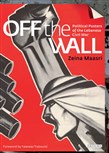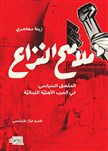Foreword
Posters as Weapons
Fawwaz Traboulsi
Question: Why should we remember a civil war? Answer: so as not to have it repeated. A more difficult one: what should be remembered of a civil war? Certainly not all things can be remembered. But many things should, mainly causes and lessons. But many other things should be forgotten. Yes, forgotten. As you can only forget what you know. Hence, back to memory. Forgetting is one thing, amnesia is another.
Amnesia, both officialized and popular, has been rampart in post-war Lebanon. Collective amnesia, like individual amnesia, is a form of repression of memory that involves a number of complex mechanisms. It resorts to breaking up links between memorable events and to ways of substitution, condensation and displacement quite similar to those that operate in dreams. The Lebanese wars (1975-90) are represented in the hegemonic and amnesic discourse as the 'war of others' or, in a more diluted form, the war 'for the others'. By this process, amnesia condenses multiple causality into one single cause, transfers guilt and blocks the narration of memory and reflection. Fifteen years are reduced to one denomination, al-Harb al-Lubnaniya: 'the Lebanese war', strangely enough named 'Lebanese' whilst its causes and protagonists are deemed all external or externalized. More, the long years of fighting, bloodshed, displacement and suffering soon come to be encapsulated into what resembles a natural catastrophe, say an earthquake. Post-war reconstruction is thus represented as the 'reconstruction' of an international trade centre in downtown Beirut, symbol of a magical revival of a glorious age of economic prosperity and communal coexistence. Amnesia again delinks causes and effects and blocks the obvious spontaneous question: if the pre-war period was a 'golden age', why did it produce such a horrible war? The tautological answer comes back: no relation; it was a 'war of the others'. How did the 'others' succeed in getting the Lebanese to wage 'their wars' with such enthusiasm and kill so many among themselves 'for them'? And the vicious circle goes on and on.
For those reasons, and for others, collective amnesia is pathological while it pretends to be curative. Contrary to its pretence of relieving the patient of bloody memories and traumatic events, it does the opposite: it condemns the patient to live and re-enact that traumatic past as a permanent present. That is why the post-war years have been lived as a 'cold civil war' awaiting the 'return' of the hotter version.
Zeina Maasri's remarkable achievement in this first work of hers is to draw the dividing lines between amnesia and memory. With patience, perseverance and a lot of talent she has managed to collect, document and archive hundreds of posters produced by the different protagonists during the wars of Lebanon. What makes this remarkable contribution to collective memory more valuable is that it has been undertaken by a single courageous individual, at a time when institutions and NGOs have shrunk from it.
But Zeina Maasri has done much more than that. She has analysed the posters in content and form, critically adapting a number of theoretical tools for that purpose.
To begin with, the posters were contextualized, and partially historicized, as historicizing remains the sure antidote to amnesia. Maasri does not fall into the trap that content analysts often fall into by assuming that there should always be a 'hegemonic' discourse to be sought for. She analyses a multiplicity of discourses that mutate and morph from their early modernist pretences into their later openly sectarian and identitarian selves.
The author is also careful to differentiate between civil war posters and propaganda posters. Despite the fact that the former contain elements of propaganda, their messages tend to be less concerned with subverting and demoralizing the 'enemy' than with boosting collective narcissism and mobilizing for additional reasons to die. After all, you rarely defect in a civil war. You might desert. But you would not expect 'enemy' fighters to defect, inasmuch as you would not yourself defect, as your fates in both cases will be death. The logic of the tribe has it that 'blood never turns into water'.
Posters say a lot about the war.
In this book, the war talks with pictures and words lauding disappeared leaders, and awaiting their return, and militias compete in claiming disputed territories, or a whole homeland. And as much as each protagonist's 'homeland' shrinks, in that same proportion, its own tribal-religious space is further socialized, as a delirium of violence and identity explodes.
The poster is contextualized once more to provide a background for the development of the art of the Arab poster, and specifically in the shared Lebanese-Palestinian experience, detailing producers and funders, artists, and the varieties of experiences in poster creation.
Finally, Zeina did not fail to notice the deterioration of the artistic and aesthetic quality of the poster as the tribalized religious sects shed their modernist garb and wear the militarized uniforms of murderous identities.
Civil wars are the ideal domain of the symbolic. Prolonged and inconclusive civil wars come to inflate their symbolic charge as battles are frustratingly incapable of ascent to the ultimate terminal stage that determines victory for the one, defeat for the others. The conflict then involves an additional dose of symbolic duels in which violence increases its extra-military functions. Such duels aim at inflicting as many symbolic wounds on the 'other' as possible. The protagonists of the Lebanese civil wars invented many ways of inflicting such wounds: verbal duels of swear words and vilification across the dividing lines (transmitted by loudspeakers, walkie-talkies or phones); offensive graffiti on walls; desacralization of sacred sites; abduction; humiliating treatment at checkpoints; not to speak of rape, which seems to have a dubiously limited occurrence in the Lebanese wars. The last three forms of violence are called symbolic in the sense that the physical harm done to the individual is intended as a symbolic harm to the whole community.
Here, the symbolic is never disassociated from action. The symbolic charges action with added impetus. Now, the 'individuation of the enemy' directs the sniper's hunt in which 'killing any one of them' is the equivalent of 'killing them all'; and the sacralized territory demands, at times by the intersection of holy men and women, to be desacralized by purging with blood and fire those who have soiled it. The Lebanese wars were pioneers in ethnic cleansing.
Posters, so well defined by Maasri as symbolic sites of the political struggle, soon become symbolic sites of the military struggle.
The German art historian Horst Bredekamp evokes the 'aliveness' of images, in his theory of the picture act, Bildakt.[i] He posits that pictures do not merely illustrate, they emerge in ever new forms of 'vivification' and by so doing acquire a 'reflexive' role. I do not know to what extent Bredekamp's theory can be applied to all visual representations. But one thing seems very likely: the picture act theory fits well into the relationship between art and war, between images and violence, when images can become substitutes for real action or real achievements.
No wonder that Bredekamp illustrates his theory with examples of violence that pictures provoke. He reminds us, for example, of a famous photo of an insurgent aiming a lance at a photo of Ceauşescu. Since the insurgent could not directly take hold of the visage of the Romanian dictator, he directed his punitive action at the picture. More recently, news agencies wired a photo of Egyptian demonstrators trampling down a big picture of president Hosni Mubarak during the 6 May 2008 general strike of protest against the rising cost of living.
Every day, posters are torn in the streets of the cities of the world at the hands of persons who object to their messages. But you might not be content with wounding a poster with a knife or lance; you might attempt to kill a poster.
Deranged men have often attacked works of art, knifed a canvas or disfigured a mural or a sculpture for reasons that remain largely personal, psychic. But those individual acts are the exception that proves the collective rule. The Romanian insurgent and the Cairo demonstrators are not committing a collective act, they look very much like people engaged in political assassination.
Pictures and images in the large sense of the word can be so dangerous they need to be protected by bodyguards and bulletproof material against violence. Picasso's Guernica is a case in point. It is still displayed behind a thick glass cage in the annexe of the Prado Museum in Madrid, half a century after the event that drove the artist to its creation. Next to it stands on vigil an armed member of the Guardia Civil. Picasso's mural in its home town is being protected from a different threat. In fact, it is being protected from a deranged someone acting in the name of a group suffering from 'wounds of memory' left unhealed since the 1936-9 Spanish Civil War!
As I am writing these words, a Palestinian friend sent me photos he shot as he was travelling in the Nablus area, of posters still hanging in the centre of the village of 'Aqraba showing the contradictory resilience of Saddam Hussein's memory among Palestinians. In the three of them, the dictator is shown in military attire: in one, he is dressed in military fatigues, and in the other two, shooting away with a Kalashnikov automatic rifle. Under one of the posters, Saddam is depicted as 'Master of all martyrs, leader, mujahid, and martyr: Saddam, the Glorious'. It could be inferred from the photos that they were hung by the municipality or by some influential notable. But this did not deter Palestinians who had a different idea of the Iraqi dictator from riddling two of the posters with bullet holes.
The same could be said about the famous Iraqi tankist who, retreating from Kuwait in March 1991, directed his tank's cannon to shatter a wall posting Saddam Hussein's portrait in the southern city of Basra. This symbolic act sparked an intifada of tens of thousands of southern Iraqis against the Baghdad regime. Clearly, that tankist could not foresee the effect of his act. He was merely reacting violently to the challenge of the mere visual presence a man he considers responsible for so much bloody repression and humiliation of his people.
Wars say a lot about posters.
If posters did not exude such a big dose of challenge, why would they provoke such violent reactions?
In her reading of war through posters and of posters in the light of wars, Zeina Maasri has offered us another way of looking at posters: posters as weapons.
[i] Bredekamp, Horst, 'Bildakte als Zeugnis und Urteil', in Monika Flacke (ed.), Mythen der Nationen. 1945 - Arena der Erinnerungen, Vol. I (Mainz, 2004).
Foreword by Fawwaz Traboulsi
204 pages (including 64 colored)
ISBN: 978 1 84511 951 5
Zeina Maasri's book is a key intervention in studies of visual culture and mass media in the Middle East.



